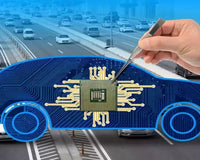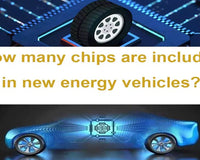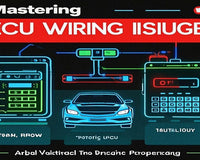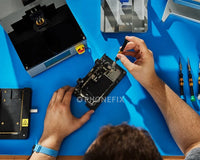In the world of modern automotive technology, Electronic Control Units (ECUs) have become the brain of vehicles, controlling various functions from engine performance to safety features. Ensuring the proper functioning of ECUs is crucial for a vehicle's reliability and safety. Microscopes play a significant role in detecting defects in these complex electronic components. Let's explore some of the common defects in car ECUs that can be detected using microscopes.
1. Circuit Board Cracks and Fractures.
Automotive ECUs Circuit boards are intricate, with numerous traces and connections. Over time, due to vibrations, temperature changes, or mechanical stress, these circuit boards can develop cracks or fractures. A crack in the circuit board of an ECU that controls the engine's ignition system could cause misfires, reduced power, and increased fuel consumption. Microscopes, such as the G1200 microscope, provide high resolution imaging. Technicians can use it to magnify the circuit boards up to 1200x, allowing them to spot even the tiniest cracks that are invisible to the naked eye. Detecting these cracks early with a microscope can prevent more serious engine problems down the line.
2. Solder Joint Defects.
Solder joints are used to connect components to the circuit board in ECUs. In an ECU that controls the transmission system, a faulty solder joint could result in erratic shifting, hesitation, or even complete transmission failure. The RF7050Pro 2KC3 microscope is excellent for surface analysis. It can detect issues like scratches, corrosion, or foreign particles on solder joints. By using a microscope to inspect solder joints during ECU maintenance, technicians can identify and rectify these issues before they cause major problems.
3. Component Wear and Degradation.
Components within the ECU, such as resistors, capacitors, and transistors, can experience wear and degradation over time. A worn out capacitor in an ECU that regulates the power supply to the engine control module could cause voltage fluctuations, leading to engine stalling or poor acceleration. Microscopes allow for a detailed inspection of these components. The Maant Sky Eye T3 trinocular stereo microscope is often used in research and development settings but is also valuable for ECU inspection. It enables engineers and technicians to study the material properties and failure modes of components at a microscopic level.
4. Contamination and Foreign Particles.
ECUs are supposed to operate in a clean environment, but in reality, they can be exposed to dust, dirt, moisture, or even metal shavings. These contaminants can accumulate on the circuit board and components. Qianli Super IR Cam 2S thermal imaging microscope camera offers 3D measurement features, which can be used to analyze the presence and location of foreign particles. Even a small particle of dust or metal can cause a short circuit or interfere with the normal operation of the ECU. Microscopes help in detecting and removing such contaminants during ECU servicing.
5. Identifying Corrosion.
Corrosion can occur on metal components within the ECU, especially if the vehicle has been exposed to moisture, salt (in case of driving in snowy or coastal areas), or other corrosive substances. By using a microscope to detect corrosion early, appropriate measures such as cleaning, applying anti corrosion coatings, or replacing corroded parts can be taken to prevent ECU failure.
In conclusion, microscopes are invaluable tools in the inspection and maintenance of car ECUs. By detecting these common defects, they help in ensuring the reliable and safe operation of vehicles. Whether it's a small independent repair shop or a large automotive manufacturing facility, incorporating microscopy into ECU inspection processes can significantly improve the quality and longevity of these critical automotive components.
Common Defects in Car ECUs Detectable with Microscopes










